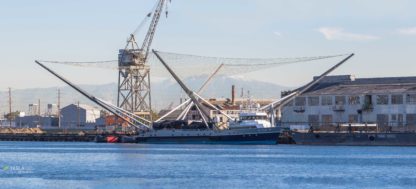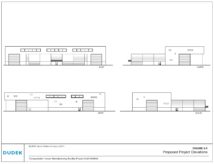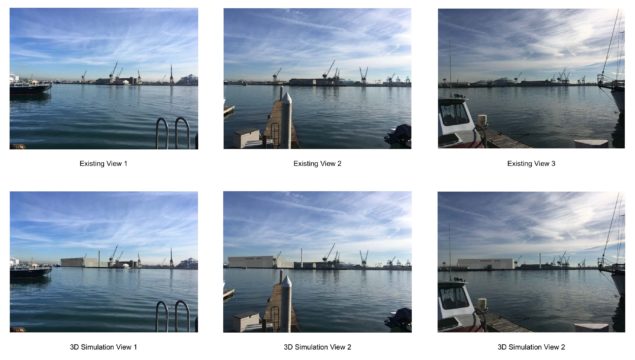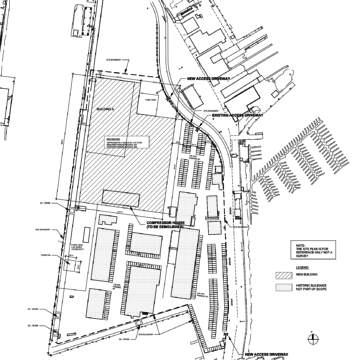
SpaceX announced today that plans to ultimately build BFR (now known as Starship/Super Heavy) in the Port of Los Angeles have at least initially been replaced with a decision to move that development to South Texas, although details about the new facilities and their timelines remain have yet to be shared.
Drawn to one possible conclusion, this could mean that SpaceX no longer intends to build a BFR factory in the Port of Los Angeles, while all Falcon 9/Heavy, Merlin, and Raptor manufacturing will remain in the company’s Hawthorne, CA headquarters for the foreseeable future. However, the statements do not preclude the possibility that SpaceX still plans to develop an oceanside factory in the near future for Super Heavy, Starship, or both.
SpaceX will not longer be manufacturing its Mars spaceship and rocket booster at the Port of Los Angeles. Instead, the work will be done in South Texas. https://t.co/LqBfPawiZf
— Los Angeles Times (@latimes) January 16, 2019
Update: CEO Elon Musk stated on Twitter that the Los Angeles Times’ original report and a partial miscommunication on behalf of SpaceX misconstrued an official statement that early-stage Starship and Super Heavy prototype construction and development would stay in South Texas for the time being. It appears that SpaceX’s Port of LA plans remain largely unchanged.
The source info is incorrect. Starship & Raptor development is being done out of our HQ in Hawthorne, CA. We are building the Starship prototypes locally at our launch site in Texas, as their size makes them very difficult to transport.
— Elon Musk (@elonmusk) January 16, 2019
“To streamline operations, SpaceX is developing and will test the Starship test vehicle at our site in South Texas. This decision does not impact our current manufacture, design, and launch operations in Hawthorne and Vandenberg Air Force Base in California. Additionally, SpaceX will continue recovery operations of our reusable Falcon rockets and Dragon spacecraft at the Port of Los Angeles.” – SpaceX, January 16th, 2019
In early 2018, SpaceX announced that it had required a new berth in Port of San Pedro with the specific intention of building a brand-new BFR factory. By keeping BFR production in Los Angeles and locating it directly adjacent to its transportation mode of choice (a barge from California to Texas), the official hope was to retain the best aerospace talent in the US (generally centered around central California) and ensure that its main Hawthorne factory was just a short drive away while still being able to relatively affordably transport massive 9m/30 foot-diameter BFR spaceships and boosters between California and Texas.
Also speaking in 2018, COO and President Gwynne Shotwell noted that the estimated cost of moving a BFR-sized object from its main Hawthorne factory to Port of LA would average $5M for a one-way trip. For context, that is almost 10% of the list price of an entirely new Falcon 9 rocket ($62M) just to perform basic, necessary logistics. As a result, SpaceX decided to build a permanent factory at a Port of LA dock, where the company had already sprung a giant tent to begin prototype fabrication. Known as Berth 240, it’s now unclear whether SpaceX will retain and still develop the Port of San Pedro plot into a permanent facility, estimated to cost a few tens of millions of dollars to complete.
In the company’s approved environmental impact assessment, the implication was that the BFR factory could double as dedicated post-recovery processing and refurbishment facility for regular Falcon 9 missions and provide a far more spacious dock for drone ship Just Read The Instructions and support vessel NRC Quest. That sort of facility could easily still provide significant value to SpaceX, although it may be the case that it would not earn its keep nearly well enough to account for the redundancy of refurbishing at Port of LA instead of simply shipping recovered Falcon 9 boosters to the main Hawthorne factory, which can already host the refurbishment of at least two Falcon 9 boosters simultaneously.
Starship Hopper has been taken apart again (for the installation of the bulkhead etc.)
📸NSF’s BocaChicaGalhttps://t.co/DlTj9Qiijz
NSF Overview News Article by Thomas Burghardt @TGMetsFan98 for those catching up:https://t.co/rgliFAkBMC pic.twitter.com/DzSJzjSvoI
— Chris B – NSF (@NASASpaceflight) January 15, 2019
SpaceX may also still want to have LA facilities capable of affordably supporting Starship and Super Heavy structures development and production in the event that some of its excellent staff of engineers and technicians are not interested in moving from Los Angeles to the sparsely-populated southeast tip of Texas. In the meantime, the company continues to work towards the completion of its first flightworthy(ish) Starship prototype at its rapidly expanding South Texas facilities, with CEO Elon Musk indicating that hop tests of the vehicle could begin as early as February or March 2019.
Expect a new article on the recent Starship hopper progress very soon!








